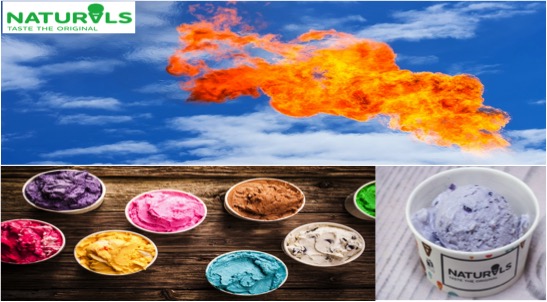Maharashtra state government was the first one to announce lockdown from March 19th onwards. In rest of India lockdown begun on March 25th. Early lockdown caught the team of Natural’s ice cream Mumbai completely off guard . The team was optimizing its production as well as distribution to clear up their stocks . But the suddenness of the announcement meant they did not know what to do with the ice-cream that had already been manufactured.
The first management decision at Naturals was to check if they could give away the ice-creams to the poor before they expired. They reached out to BMC and the local police. But, the first phase of lockdown saw strict implementation and there was lack of clarity over vehicular movements.
Natural’s is doing responsible business
“It was not like 10 kgs of sample we’d dispose of through wet waste managers of municipality. 26 tonnes of ice-cream can not be disposed off in a normal drain. The ice-cream which has so much of protein, lactose ,sugar and fat will choke the gutter. We did not want to put it in a landfill also We wanted to work with someone who could do justice to both these items,” says Naik, VP supply chain.
Natural’s finally decided to reach out to Sanjeevani S3, one of the rare wet disposal plants in Mumbai. Located in the Malad (W), Sanjeevani S3 sees 2,000 kgs of wet waste disposal every day.
Sanjeevani S# first asked Naturals to first send them a small quantities of ice-cream for taking trials.. It typically takes about 24 hours for the waste to be converted into gas. A percentage of the waste also gets converted into compost. A combination of bacteria in our digester converts the ice-cream into gas and compost. Compost typically constitutes 10% of the end product. But since there’s nothing solid in ice-creams, very little compost gets produced. Most of the ice-cream gets converted into gas.
Technology of waste to wealth
“The gas constant, or the amount of gas produced, is around 100-110m3 per tonne for normal wet waste. But with ice-cream 220-250m3 per tonne of gas was produced. As per Sanjivani, it’s a very good substrate for biogas plant. The whole process of converting 26 Tons of Ice cream into gas took 40 days.
“It takes time for microbes to consume oil and fat. We asked Naturals two days’ gap per week so that our microbes consume could recover after consuming the extra fat,” says Zulkif. So, the entire process of getting rid of the 26 tonnes of ice-cream took Sanjeevani S3 and Naturals more than 40 days.
Sanjivani did not have capacity to bottle methane gas as cooking gas or convert gas into electrcity. Had the facility been even more advanced, it could have powered 30 homes in any slum of North Mumbai for a month.
This gas could have been converted into electricity also. 100m3 gas is equivalent to two-and-a-half LPG cylinders. The 26 tonnes of ice-cream was converted into approximately 52,000m3 methane which was flared up in open.In other words , that would equal to 1,040 gas cylinders or 6,240 units of electricity. This wastage could have been monetised better in the presence of required infrastructure.



























